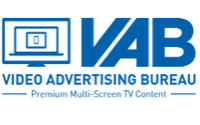It's Not TV, It's VAB: Trade Bureau Drops Cable, Television Too
- by Joe Mandese @mp_joemandese, May 19, 2015

In a move that is symbolic of bigger shifts taking place in the nature of media, the Cabletelevision Advertising Bureau is leaving the cable TV behind to become the Video Advertising Bureau.
The change is more than a reboot and a name change, but a reincorporation with new bylaws and a new mission to promote the value of video programming and advertising, derived from the major TV networks. That makes the VAB the primary player for the so-called “TV video” marketplace and pits it against the IAB (Interactive Advertising Bureau), which is the primary voice of the “ad-tech video” marketplace.
“It’s a content mentality vs. an algorithm-first mentality,” says Sean Cunningham, the longtime president-CEO of the CAB, who assumes the same role at the VAB. Cunningham says the VAB does plan to play a role in influencing the technological side of the marketplace too, but that it will mainly be about figuring out ways to leverage it to automate planning and buying and facilitating better data that helps advertisers and agencies utilize TV-based video programming better.
advertisement
advertisement
The more algorithmic approaches of programmatic video, he implied, will be better off left to the IAB, which has been playing a leadership role in setting industry standards. VAB isn’t abandoning its TV roots completely. The tagline in its fancy new logo reads: “premium multi-screen TV content,” and as such, represents an extension of a position that Cunningham tried to advance in his early days at the CAB.
It’s a concept he called a “One Television World.” Back then, and especially now, he says the early distinctions between “broadcast” and “cable” TV that made the CAB necessary in its earliest days have essentially gone away. Most of the major broadcast network-owned companies were already members of the CAB, and with the formation of the VAB, it picks up an especially big one: CBS.
The creation of VAB raises questions well beyond the intramural roles between it and the IAB, but also the Television Bureau of Advertising (TVB), and even the Digital Place-Based Advertising Association -- or the DPAA, which ironically got its start as OVAB, or the Out-of-Home Video Advertising Bureau.
The VAB will continue to also represent the interests of cable TV system operators, which are transitioning from a “TV-centric” mentality to be more of a video distribution and programming framework. In total, the VAB membership comprises 110 networks and the 11 largest MVPDs.



Very interesting, especially as regards the "overlap" between the new VAB and the IAB. I wonder how the VAB will feel regarding the ad "viewability" issue for digital video? Will the VAB support the so-called "standard" definition that the IAB is trying to sell---50% of an ad's content must be on screen for at least two seconds----or a more ad-relevant metric?
Leaders love to be chased! Welcome, Sean, to the world of digital video - you'll only make it (and your members) stronger, better, more adept... and larger.
But Ed, with great respect, you got a central fact wrong in your query: The "the so-called 'standard' definition that the IAB is trying to sell" was developed by the Making Measurement Make Sense (3MS) initiative launched and funded jointly by ANA, 4As, and IAB, and run by the MRC. The work was premised on research commissioned and financed by our three associations from Bain & Co., with support from Medialink LLC. The MRC continues to lead the research and standard-setting, overseen by a leadership group consisting of senior staff and member executives equally from among the three associations. There have been well more than 100 senior executives from brands, agencies, and publishers involved in 3MS committees and task forces over the years - working jointly, as well as in task forces convened by the individual associations.
In short, the digital advertising viewability standards - plural - are INDUSTRY standards. If you doubt that, call George Ivie of the MRC, Bob Liodice of the ANA, and Nancy Hill at the 4As.
Cheers,
Randall
@Randall, with due respect, as well, It doesn't matter to me whether 1000 or 50,000 executives representing numerous orgainzations and committees signed on to the ad viewability "standard". It is not an acceptable basis for authorizing payment to a seller by an agency in behalf of its clients, based on advertising "exposure". Also, it is not comparable to other media--TV, radio and print.
In my view, the definition for a video ad should be "able to watch in its entirety" , or as close to this as possible. As you know, there are tighter ways to get at this----like determining viewability for segments of a video ad, then qualifying the entire ad as "viewable" only if each segment of the message ---not any segment----could have been seen. That, at least, would be a start.
As you say, the 50% for two or more seconds rule may be an "industry" standard but I would not accept it if I were an advertiser and I believe that many others share my opinion.
You can always tell what the seller thinks his product is worth by the amount he charges.
Everyone is over-indexed on digital and underindexed on print, especially Hispanic print and radio.
If you want to do media buys and plans that drive sales NO ONE should be accepting budgets that are so heavily focused on digital with these kinds of issues. No one.
Those of us who care about driving sales for our clients should start saying something now.